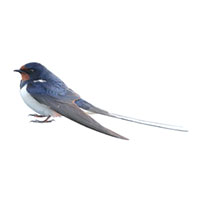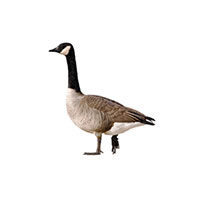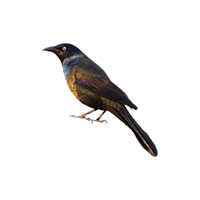Crows in Wisconsin
Crows are very social, sometimes forming flocks in the thousands. They are inquisitive, which makes them good learners and problem-solvers. They’re also aggressive and often chase away larger birds including hawks, owls, and herons.
Crow Diet
Feed on practically anything they can find, including insects, spiders, snails, earthworms, frogs, small snakes, shellfish, carrion, eggs, and young of other birds, seeds, grain, berries, and fruit. They often raid garbage cans and pick over discarded food containers.
Crow Habitat & Nesting
Crows are common birds of fields, open woodlands, and forests. They thrive around people and are often found in agricultural fields, lawns, parking lots, athletic fields, roadsides, towns, and city garbage dumps. The nest is built by both the male and female. It is a large bulky basket of sticks, twigs, bark strips, weeds, and mud, lined with softer material such as grass, moss, plant fibers, and feathers.
Crow Mating & Life Cycle
The male bird has a courtship display of facing the female and fluffing his body feathers while spreading his wings and tail. Once a male and female have mated, they perch together, touch bills, and preen each other’s feathers. Since they mate for life, pairs that have already mated do not usually have courtship displays.
Typically, four to six dull blue-green to gray-green eggs are laid. Incubation is mostly by the female for about 18 days. Once hatched, the young are fed by both parents. Young leave the nest four to five weeks after hatching.
Crow Damage
Large crow nests cause serious problems, particularly when located in towns or other sites near people, because of the odor of the droppings, health concerns, noise, and damage to trees.
Crow Prevention
Crows are covered under the Federal Migratory Bird Act, which states that most birds and their parts – feathers, eggs, nests, etc.- are protected by federal law from being killed, taken, transports, possessed, bought, sold, imported, or exported without a valid federal permit.
Crows are intelligent and determined birds with good memories and the ability to use tools. Crows have also been known to remember the faces of their enemies and hold grudges. To truly get rid of crows, you’ve got to outsmart them.
To deter crows from nesting or hanging about, remove potential food sources. Secure trash cans, remove bird feeders and bring pet food containers inside.
Additional deterrents requiring installation can be used, such as netting or spikes.
Crow Control
Bird Control Services provides customized solutions to address crow concerns through removal, exclusion, and deterrence. Factors that determine the best method of control include an area of application, bird species, location, access. Spikes, netting, and electrical deterrents are the most commonly used solutions. Bird services are limited to commercial clients.
Need help with Crows?
We'll call you! Leave your information below.
Pests Belong Outside!
Leave your information below and we will give you a call back.
"*" indicates required fields
*During normal business hours. After hours inquiries will be returned the next business day.






